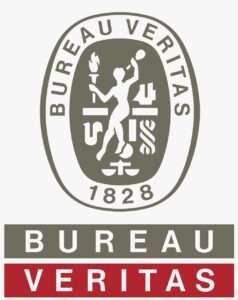1. IDENTIFIQUE

Identifique los organismos de certificación (OC)
Aprobados por Florverde en:
2. ELIJA, CONTACTE, COTICE

Elija, contacte y cotice el servicio con el OC de su preferencia
3. SOLICITE Y DILIGENCIE

Solicite y diligencie el formulario de registro para la certificación Florverde entregado por el OC.
4. ENTREGUE

Entregue al OC el formulario de registro completamente diligenciado.
5. EL OC LE ENTREGARÁ

El OC le entregará un contrato de sublicencia para su revisión y firma.
6. FIRME Y ENVÍE

Firme y envíe de vuelta al OC el contrato de sublicencia.
7. NOTIFICACIÓN OC

El OC notifica a la Secretaría de Florverde del registro del solicitante.
7. REGISTRO EN EL SIME

Recuerde que paralelo al proceso de registro debe solicitar a la Secretaría Técnica y Administrativa de Florverde el acceso al Sistema de Impacto, Monitoreo y Evaluación Florverde
8. ASIGNACIÓN NÚMERO POR FSF

La secretaría de Florverde asigna el número exclusivo Florverde (NFSF) que servirá de identificador único para todas las actividades de la certificación y el OC le informará el NFSF asignado.
9. NOTIFICACIÓN

El OC le informará la fecha para su evaluación.
10. EVALUACIÓN

¡Recuerde!
El proceso de registro deberá haber finalizado antes antes de que pueda tener lugar la evaluación.
NUESTRO ESTÁNDAR
- Management system
- Labor rights
- Workers education, training and welfare
- Health and safety management in the workplace
- Water management and conservation
- Soil conservation, substrate and fertilization management
- Phytosanitary control and secure handling of pesticides
- Waste management
- Property, land and biodiversity management
- Energy efficiency and carbon footprint
- Origin ofplan material
- Post-harvestproduct care
- Tracking and records
- State and use of the Florverde Sustainable Flowers trademark of conformity

Management system
This chapter aims to guide the use of tools for continous improvement of socio-environmental performance and strengthen the commitmet of top management system facilitates continous improvement and compliance with the Florverde Standard.
Topics covered:
- Responsability and management commitment
- Inspection and internal audit
- Attention to non-conformity, complaints and claims.
No OF REQUIREMENTS: 7

Labor rights
This chapter is based on international conventions and guidelines defined by the ILO. It aims to be an essential tool to facilitate the knowledge and understanding of all the regulatory elements known as “labor rights”, so as to maintain conditions of equality, safety, dignity and freedom.
Topics covered:
- Voluntary work.
- Work hours.
- No child labor.
- No discrimination or abuse.
- Freedom of association and collective bargaining.
- Work practices
- Salaries and remuneration
- Sub-contracting
No OF REQUIREMENTS: 23

Workers education, training and welfare
This chapter aims to provide guidelines so that the production unit can improve the quality of life of its workers through their education, training and well-being while further developing their physical, mental, social and cultural conditions, and those of their families and communities.
Topics covered:
- Training and coaching.
- Wellbeing.
No OF REQUIREMENTS: 3

Health and safety management in the workplace
It is based on international conventions and guidelines defined by the ILO, which facilitate an improved performance by workers and better conditions in their work environment.
Topics covered:
- Workplace health and safety system policy and objectives.
- Organization of the workplace health and safety systems (HSS).
- Assessment of health and work conditions.
- Professional training, induction and re-induction in the safety, health and hygiene.
- Preventive and occupational medicine.
- Implementation of the health and safety management system in the workplace (HSMS).
- Reporting and investigation of work incidents, accidents and work-related illnesses.
- Criteria for the purchasing of goods or contracting of services based on HSMS regulations.
- Performance measurement and evaluation in HSS
No OF REQUIREMENTS: 33

Water management and conservation
The responsible and rational water use is encouraged in order to contribute to its long-term preservation and guarantee its availability; in turn, ensuring continued production of flowers and ornamentals by controlling the uptake and consumption of water, the use of rainwater, the implementation of efficient irrigation techniques and systems, and water reuse, among other alternatives.
Topics covered:
- Efficient use and water saving.
- Water quality.
No OF REQUIREMENTS: 15

Soil conservation, substrate and fertilization management.
Proper soil management, including substrates and fertilizers, helps reduce input costs, conserves soil, and minimizes contamination risks.
Topics covered:
- Substrate use.
- Soil management.
- Monitoring of nutritional needs.
- Programs and records of fertilizer application.
- Safe handling of fertilizers.
No OF REQUIREMENTS: 22

Phytosanitary control and secure handling of pesticides
The implementation of an Integrated Pest Management scheme (IPM) is promoted, and seeks to use various control techniques that, harmoniously combined, help maintain the incidents of phytosanitary problems at levels that do not cause economic damage in cultivated products.
Topics covered:
- Integrated pest management (IPM).
- Phytosanitary control.
- Programs and record of pesticide application.
- Minimizing risk of chemical pesticides and bio inputs.
- Facilities, equipment and proper handling practices of pesticides.
No OF REQUIREMENTS: 34

Waste management
Proper waste management can prevent contamination and keep production units clean and tidy. Waste management must include the reduction of waste generation, separation according to the characteristics of the waste material, safe storage, reuse and recycling, as well as treatment and disposal in accordance with the current and applicable legal regulations.
Topics covered:
- Prevention and minimization.
- Reuse and recycling.
- Treatment and disposal.
No OF REQUIREMENTS: 17

Property, land and biodiversity management
Here we ensure that the floriculture business is conducted in permitted areas, while promoting the conservation of biodiversity, recovery of land that is impacted by the activity, and an improvement to the working environment within the companies by means of road management, green areas, and barriers of native plant species.
Topics covered:
- Development of the activity in permitted areas.
- Management of the production.
- Landscape, Biodiversity and conservation.
No OF REQUIREMENTS: 18

Energy efficiency and carbon footprint
The use of renewable energy sources and conventional energy optimization is promoted via technological upgrading and the implementation of good operational and maintenance practices. The developments of programs that reduce or offset GHG emissions are also encouraged.
Topics covered:
- Energy efficiency.
- Greenhouse gas (GHG) emissions.
No OF REQUIREMENTS: 8

Origin ofplan material
Knowing the origin and quality of the plant material prevents fraud and guarantees respect for the intellectual property of plant breeders, as well as ensuring compliance with phytosanitary regulations and counting on available information about their suppliers and customers in terms of quality specifications.
No OF REQUIREMENTS: 12

Post-harvestproduct care
Florverde Sustainable Flowers promotes the implementation of best practices and procedures relating to hygiene, hydration, treatment, quality control of the water used, and the product’s cold chain during harvest and post-harvest.
Topics covered:
- Post-harvest procedures.
- Post-harvest treatments.
- Product quality.
- Quality of water used in post-harvest.
No OF REQUIREMENTS: 15

Tracking and records
It is important to trace the origin of the product from the place where it was produced to the immediate customer, as well as identify the conditions under which it was produced; this allows them to find the causes of the problems regarding quality and thus, promptly inform their customers, resolving their concerns and requirements.
No OF REQUIREMENTS: 4

State and use of the Florverde Sustainable Flowers trademark of conformity
Holders of the Florverde certification are allowed to use the Florverde Sustainable Flowers’ trademark of conformity provided they comply with the conditions described in this chapter and the General Rules for the Florverde Sustainable Flowers Certification.
The holder must inform the customer in a clear and transparent manner of the conditions of use of the mark of conformity and what it means to purchase a Florverde® certified product.
No OF REQUIREMENTS: 2
Documentos Para Descargar En Español
Organismos de certificación
Si usted es un productor de flores y ornamentales y quiere aplicar a la certificación Florverde® Sustainable Flowers por favor asegúrese de revisar el Estándar y que cumple con todos los requisitos. Si está listo para certificarse por favor póngase en contacto con unos de los siguientes Organismos de Certificación para recibir información adicional acerca del proceso.
Kenia Zevallos
Gerente Técnico kenia.zevallos@bureauveritas.com
Phone: +593985204094
![]()



REGLAMENTO
El Esquema de Certificación de Florverde Sustainable Flowers el reglamento general para la certificación, documento marco necesario para la certificación de flores y plantas ornamentales con base en la guía ISO/IEC 65G.
A continuación puede descargar el reglamento general para la certificación y las pautas para el uso de la marca de conformidad Florverde.






